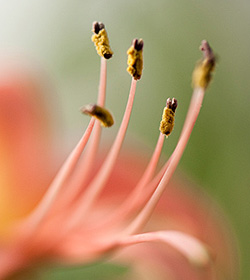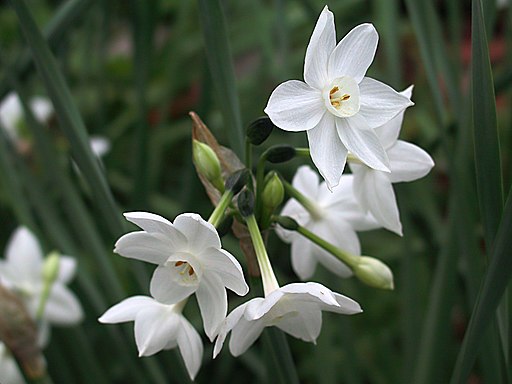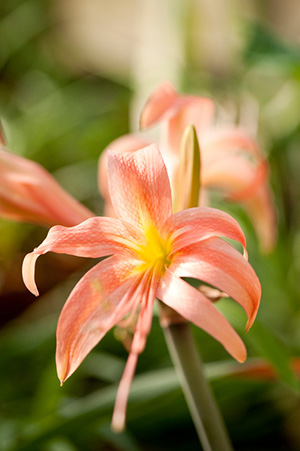Cheerful Paperwhites and Statuesque Amaryllis
Posted in Horticulture on December 30 2014, by Sonia Uyterhoeven
Sonia Uyterhoeven is NYBG‘s Gardener for Public Education.

I am not sure how we managed to get to the end of this year so quickly—perhaps I never am—but like all the others, this year seemed to gallop as it approached the finish line. I generally like to finish off my year of blogging with environmental topics, so that we can reflect on our role and renew our commitment to preserving the natural world in small yet significant ways.
This year, these larger-than-life contemplations will have to wait until after the New Year. My topic today is light, airy, and fragrant. Everyone seems to be growing paperwhites (Narcissus papyraceus) and amaryllis (Hippeastrum sp.) this year. I will describe how easy it is to grow these two winter wonders and inspire you to try—if you haven’t already.
Based on the classification given by the American Daffodil Society, paperwhites come from Division 8—Tazetta Daffodils. The members of this division are incredibly floriferous with some producing up to 20 blossoms per stem (range 5–20). They prefer warmer conditions than many of their bulbous brethren. While some members of this division are hardy to zone 5, the paperwhites that you force in the winter months are only hardy from zones 8–10.
When choosing your paperwhites, reach for the bigger bulbs. They tend to produce more flowers. Keep them dry and at room temperature until you plant. You can either plant them in a potting mix that affords good drainage, or you can grow them in water. Choose a shallow pot or container 3–4 inches deep—make sure you have drainage holes for the potting mix, and none if you are growing them in water.

Add water and remember to keep the water level just at the base of the bulb. The water should only come in contact with the basal plate. That will encourage the bulb to send out its roots and grow. If, however, you add too much water and submerge the bulb, you will risk rot. Keep the container in a cool area with indirect or no light and check water levels.
Once you see the roots start to form, bring your paperwhites to a sunny location – the more light they have, the less they will stretch and become floppy. You can also manipulate their growth by placing them in cool temperatures to slow them down (55–65?F) or warmer temperatures to encourage or accelerate growth (70–75?F). When they are in flower, it is best to keep them out of direct sunlight and away from heat sources – this will help prolong the bloom.


If you have not chosen paperwhites to brighten up your winter blues, but have gone for the statuesque elegance of an amaryllis, then here is a quick primer. Plant your amaryllis with at least one third of the bulb above the surface. Leave one inch between the container and the bulb. Water your amaryllis well when planting but then keep it on the drier side until you see the flower stalk emerge.
Once the flower stalk appears, start watering on a regular basis. Amaryllises need warm, well-lit places to grow until the buds begin to open. Then they can be moved to a cooler location, out of direct sunlight to help the blooms last longer. Remember, avoid direct sunlight and heat sources while in bloom.
After it finishes flowering, cut the stalk back close to the base. Grow the plant in a sunny location. Fertilizing is optional—you can give it a diluted feed (1/2 strength dilution) every other month.
Stop watering and feeding your amaryllis in early August and let it go through a dormancy period that usually lasts for about 8 weeks. Allow the plant to dry out during this time. In late September, cut back the dead foliage and repot the bulb in fresh potting soil. Place in a sunny location and begin the cycle again. Happy New Year!


If amaryllis begin growing in storage,can they still bloom?I was saving bulbs for Jan but they’ve begun to grow